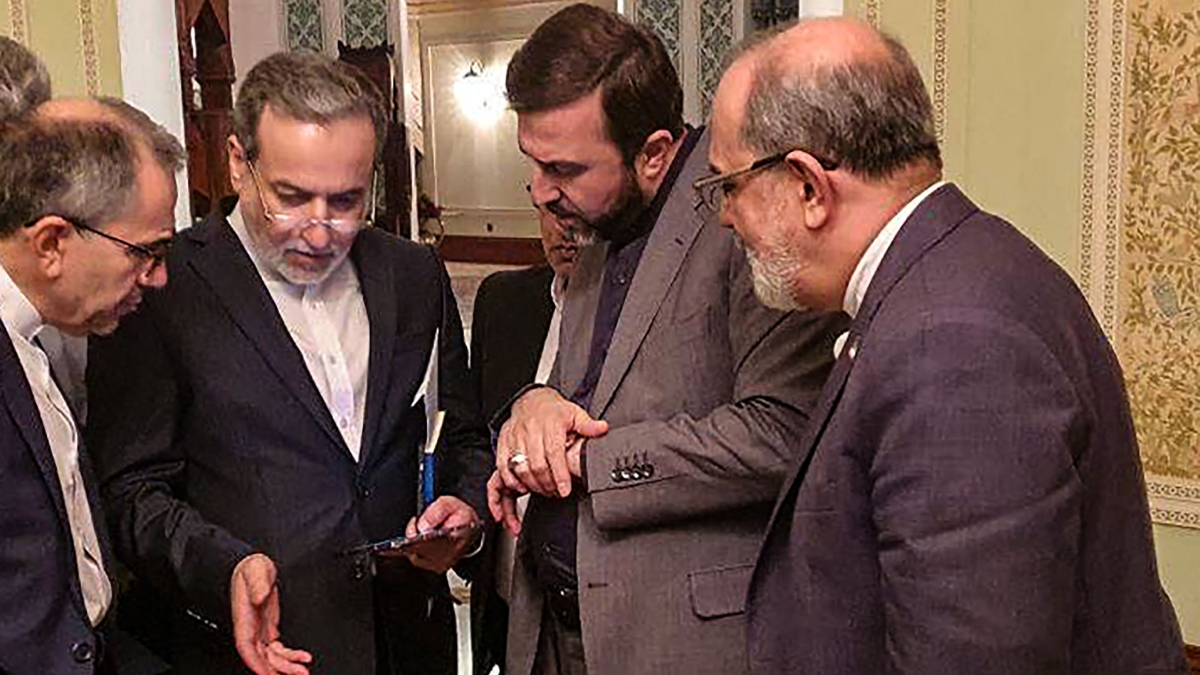'Treaty of Hudaybiyyah': How Iran is using religious symbolism to appease hardliners protesting against talks with US
 This handout picture provided by Khabar Online on April 12, 2025, shows Iran's Foreign Minister Abbas Araghchi (2nd-L) speaking with members of the Iranian delegation after a meeting in Muscat. | AFP
This handout picture provided by Khabar Online on April 12, 2025, shows Iran's Foreign Minister Abbas Araghchi (2nd-L) speaking with members of the Iranian delegation after a meeting in Muscat. | AFPAs Iranian leadership faces the wrath of hardliners against the government decision to engage in 'indirect' talks with the US, the government has resorted to religious symbolism to justify its shift in foreign policy.
There is a divide between reformists and hardline factions with regard to talks. Reformists welcome the negotiations while conservatives feel it is against the Islamic Republic's foreign policy to engage with the US. However, Supreme Leader Ali Khamenei's silent approach to the talks has taken the edge off hardliner protests.
In these circumstances, the leadership has drawn historical parallels in its bid to justify negotiations on the country's nuclear programme with the US. Several clerics, political figures, and media outlets are now comparing the potential US-Iran agreement with the sacred 'Treaty of Hudaybiyyah', according to London-based Iran International.
It is said that the 'Treaty of Hudaybiyyah' was a peace agreement signed in 628 between the Prophet Muhammad, representing the state of Medina, and the Quraysh tribe of Mecca. It established a ten-year truce which allowed Muslims to make a pilgrimage to Mecca in exchange for several concessions to Quraysh. While it was considered a victory for the Quraysh initially, the treaty went on to lay the foundation for Islam's expansion.
According to Ayatollah Kazem Nourmofidi, Khamenei’s representative in Golestan Province, some Muslims saw the treaty as unjust and believed the Prophet should not have conceded. "But that peace proved to be a clear victory," he argued, justifying the talks which had initially received so much criticism from the country's hardliners who have long opposed negotiations with the US.
A similar stance was evident in an article that appeared in Tasnim News Agency, a state-backed media organisation with close affiliations to the Islamic Revolutionary Guard Corps (IRGC). An opinion piece that appeared in the Tasnim also referred to the Prophet's negotiations with the enemies of Islam and the controversial Treaty of Hudaybiyyah. It said the Prophet's "strategic flexibility and concessions" led to far greater conquests.
Iran had earlier too used religious references to justify its policy shift like in 2013 when it began talks that led to the 2015 nuclear deal (the Joint Comprehensive Plan of Action, or JCPOA). Khamenei had then referred this as "heroic flexibility'—a reference to Imam Hassan, the second Shiite Imam, who accepted a truce with a hostile ruler to protect himself and his followers from harm.
Middle East